Lesson 3Indicating Things - Home -
Let's see
House
View movie
Explanation through photos
Click (tap) to enlarge and show explanation.
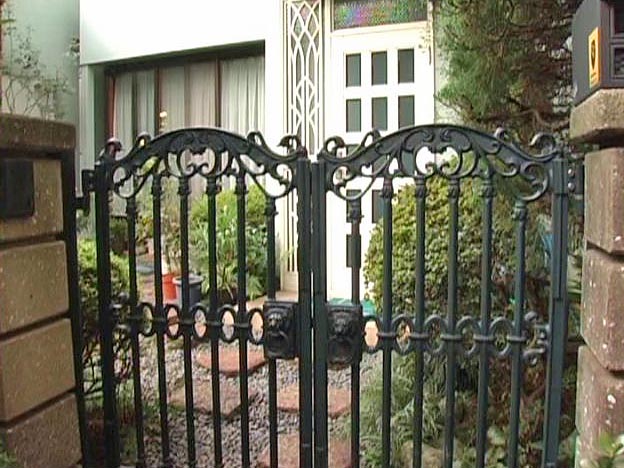 Gate
Gate
This is the gate of a house. Because a large house is usually surrounded by a fence or wall, you go through the gate to enter the property. Most houses have an intercom near the gate and visitors can talk with persons in the house through it.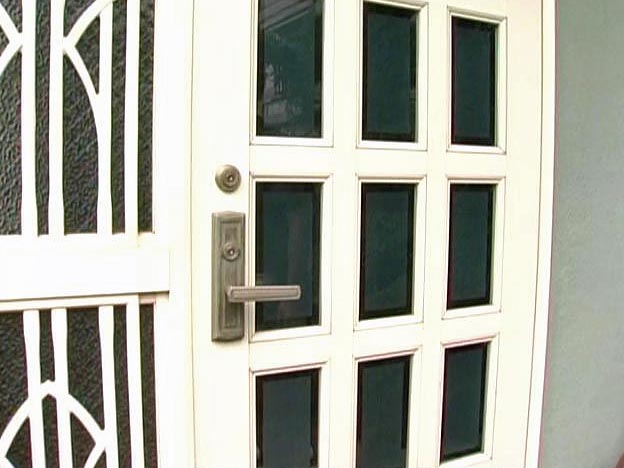 Entrance door
Entrance door
You open the entrance door and enter the house. There are various types of doors.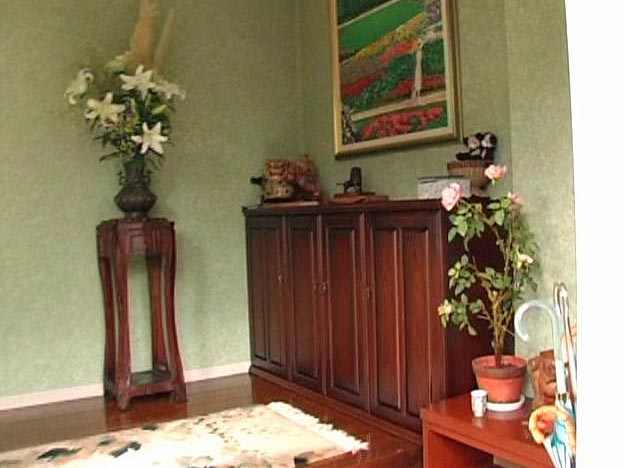 Entrance
Entrance
This is the entrance. It is decorated with a painting, flowers, and ornaments. There is a shoe cupboard, mat, and umbrella stand.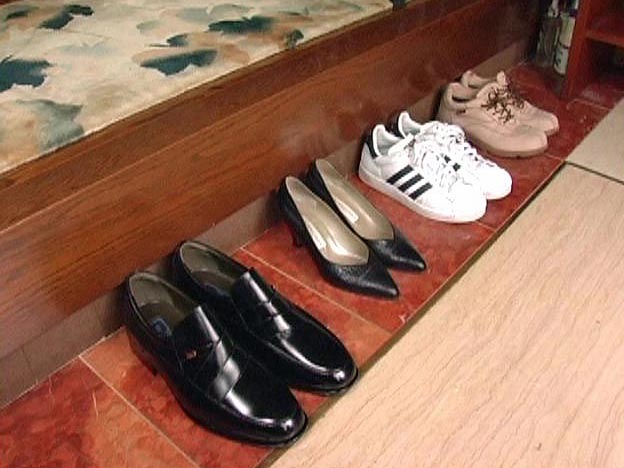 Lining up shoes
Lining up shoes
When you enter the house, you take off your shoes at the entrance. You shouldn't enter the house wearing your shoes. After taking them off, you neatly line up your shoes with other shoes on the entrance floor so that their toes face the entrance door.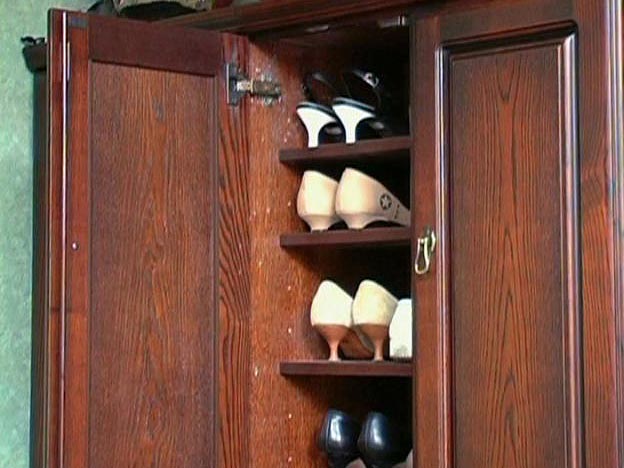 Shoe cupboard
Shoe cupboard
This is a shoe cupboard. Shoes you don't wear are kept in it.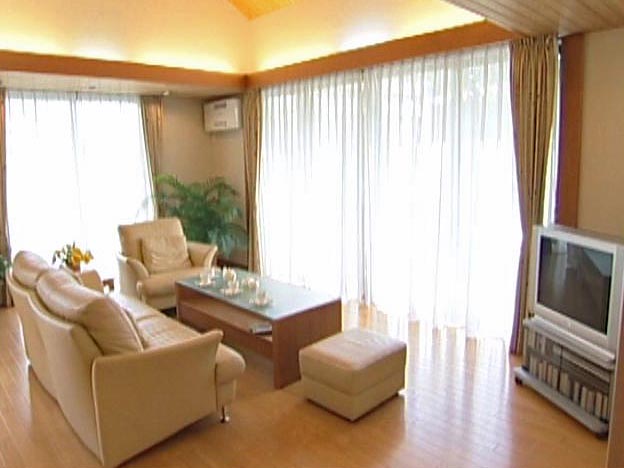 Living room
Living room
Family members gather in the living room. The living room is sometimes called an ima. If it is a Japanese-style room, it is called cha no ma.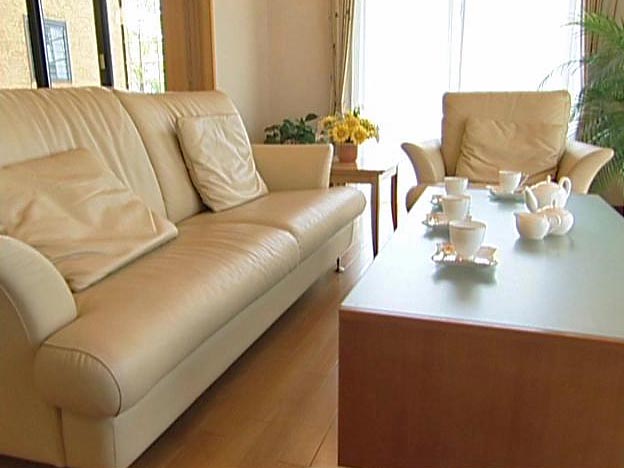 Sofa
Sofa
Many homes have a sofa in the living room. Sitting on the sofa, people relax or watch television.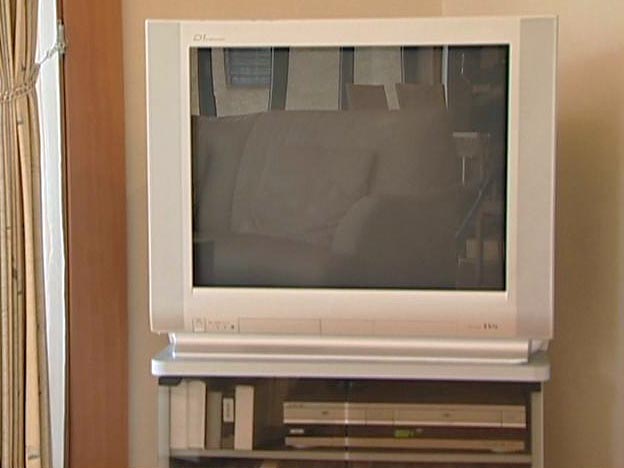 TV and DVD
TV and DVD
There are also a TV set and DVD player in the living room.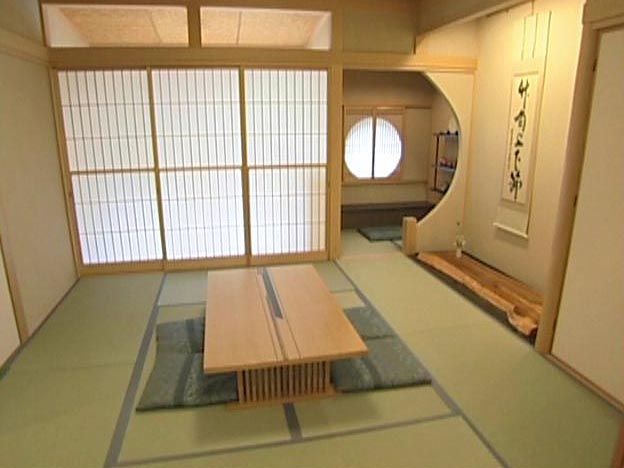 Japanese traditional room
Japanese traditional room
This is a traditional Japanese room with tatami mats. It is usually used when guests come to the house. Fewer and fewer houses have a Japanese-style room these days.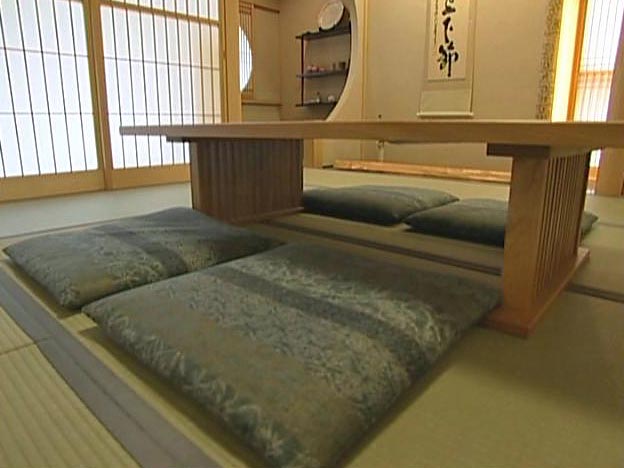 Tatami and zabuton
Tatami and zabuton
Tatami is made of igusa, or rush. In Japanese rooms, you sit on zabuton cushions, not a chair.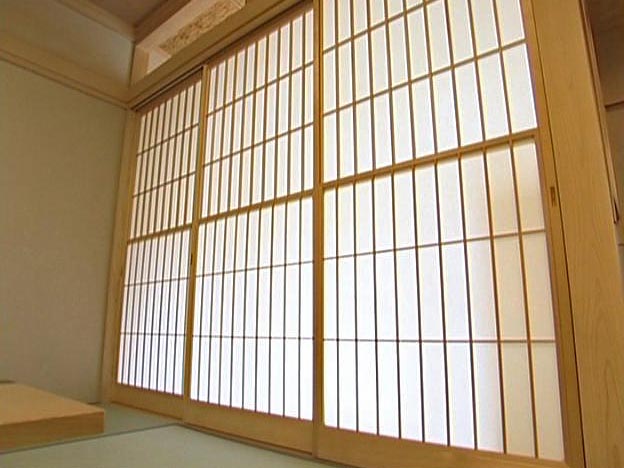 Shoji
Shoji
This is shoji, a screen or sliding door of wooden frames and paper. Shoji's role is similar to that of curtains. Wind can't pass through but the light can.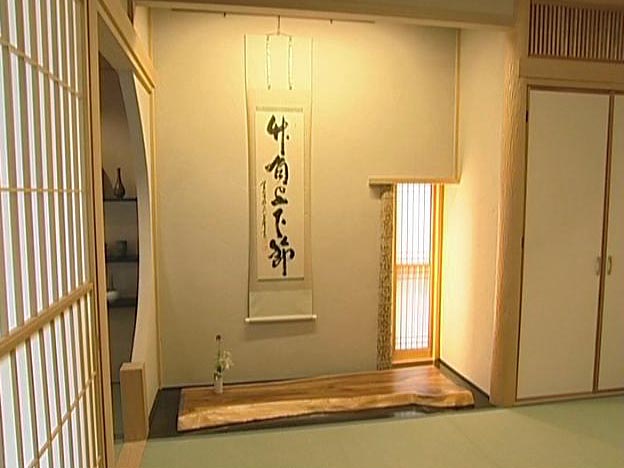 Tokonoma
Tokonoma
There is a tokonoma, or elevated alcove where something is displayed, in a traditional Japanese room. It is at the far end of the room.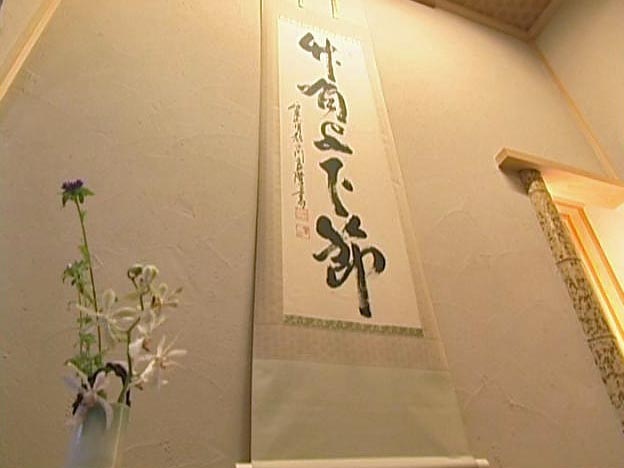 Hanging scroll and flowers
Hanging scroll and flowers
A hanging scroll or flowers are displayed in the tokonoma. The scroll or flowers are chosen according to the season. Toilet
Toilet
This is a Western-style toilet. There are both Japanese-style toilets and Western-style toilets in Japan. Recently, Japanese-style toilets have been decreasing in number.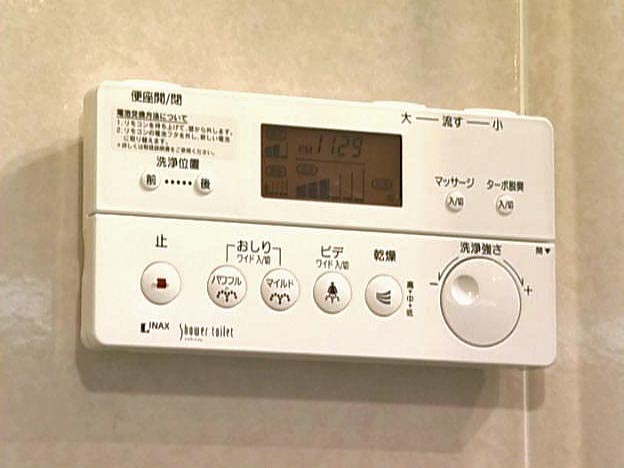 Washlet 1
Washlet 1
Some Western-style toilet seats have a function to clean the buttocks with warm water. You operate it by pressing buttons on the panel.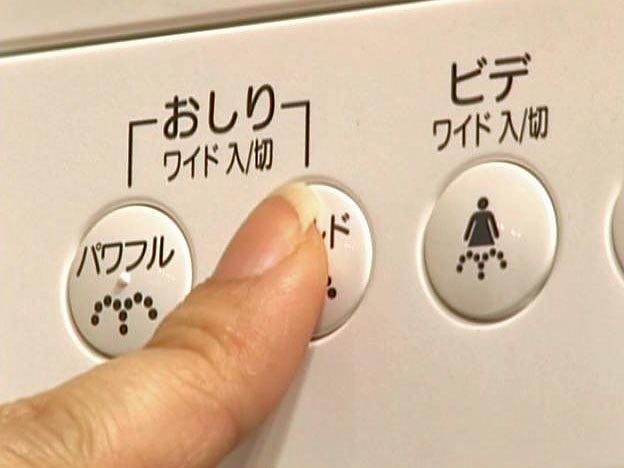 Washlet 2
Washlet 2
When you clean your buttocks, you press the oshiri [buttocks]button. Press the powerful button for a strong water flow or the mild button for a gentle water flow. The bidet button is for women. If you press the kanso [dry] button, you can dry your buttocks with warm air.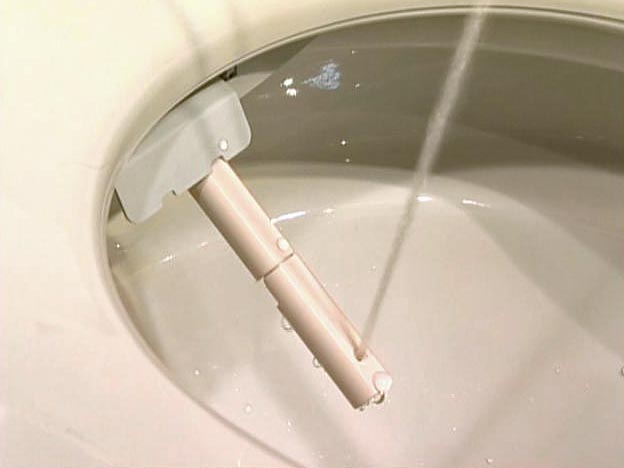 Washlet 3
Washlet 3
When you press the button, warm water gushes out, cleaning the buttocks. When you want to stop the water, press the tomeru [stop] button.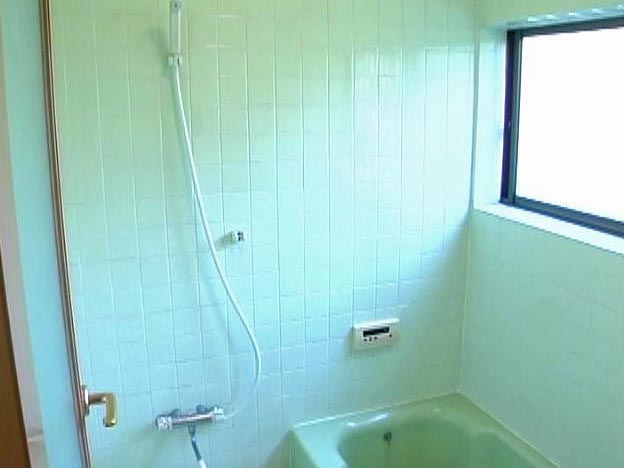 Bathroom 1
Bathroom 1
This is an ofuro bathroom. It has two areas for different functions: there is a place where you wash your body, and the bathtub where you can soak in the hot water and warm yourself.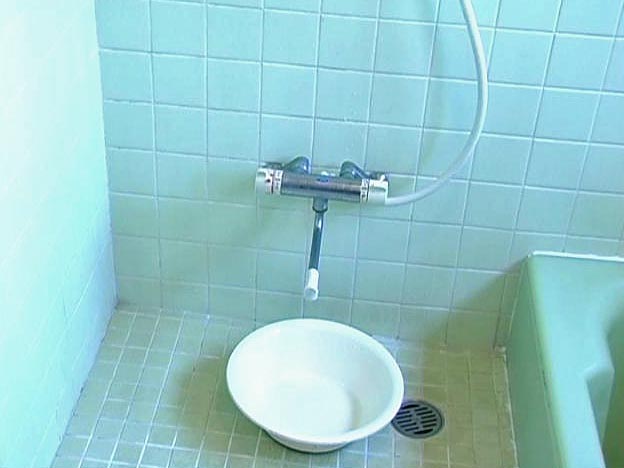 Bathroom 2
Bathroom 2
You first wash your body and hair outside the bathtub. You wash using a wash bowl with water taken from the tub, or showering. Showers in Japan usually come with a hose, and you can move it freely with your hands. Few showers are fixed to the wall in Japan.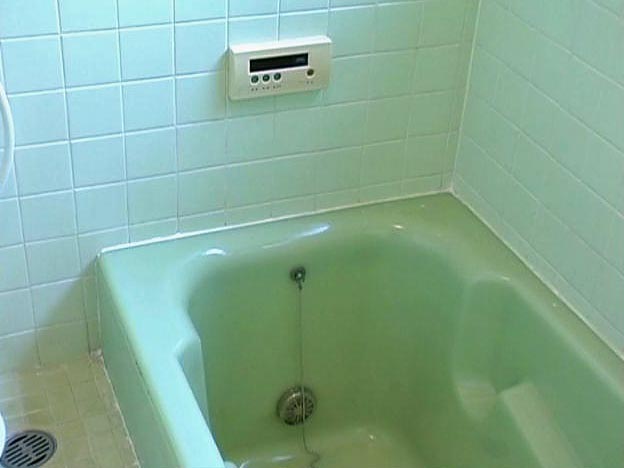 Bathroom 3
Bathroom 3
After washing your body, you soak in the bath to warm yourself. In the bath, you mustn't wash your body and hair. You don't drain the tub after taking a bath, because family members use the same water.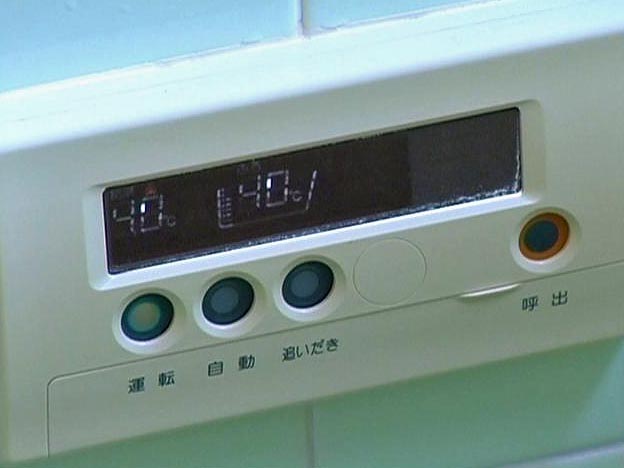 Bathroom 4
Bathroom 4
Currently, some baths have a system that automatically fills the tub with hot water. You set the water temperature and quantity, and press the jido [automatic] button on the panel on the wall. If you press the oidaki [heat up] button, water that has cooled is heated up again.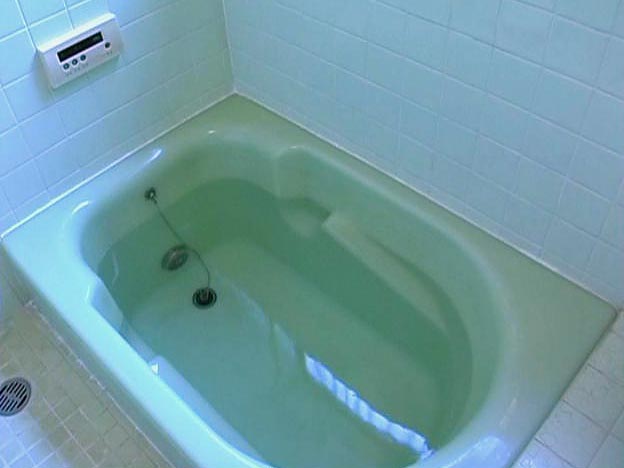 Bathroom 5
Bathroom 5
When the bathtub is full, the system automatically stops the water.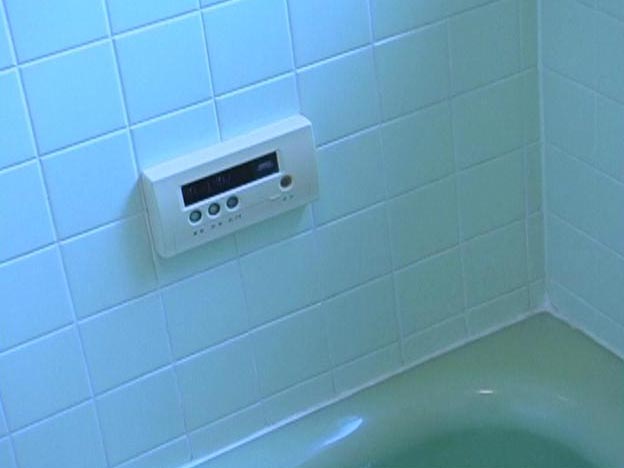 Bathroom 6
Bathroom 6
Some baths have a voice function that tells you the bathwater is ready when the tub is filled with enough hot water.

